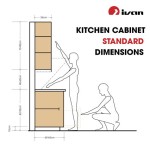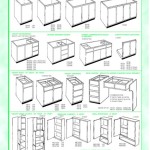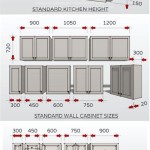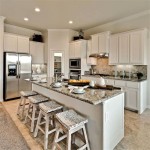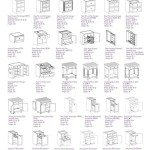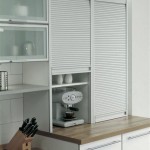Essential Aspects of Kitchen Cabinet Height
Determining the ideal height for kitchen cabinets is crucial for maximizing functionality and aesthetics. While there are standard measurements, personal preferences and specific needs should also be considered. Understanding the factors that influence cabinet height and exploring various options will help you create a kitchen that is both comfortable and stylish.
Standard Cabinet Heights
Typically, kitchen cabinets come in three standard heights:
- Base Cabinets: 34.5 inches (88 cm) high, including the countertop.
- Wall Cabinets: 30 inches (76 cm) high, measured from the countertop to the bottom of the cabinet.
- Tall Cabinets: 84 inches (213 cm) high, typically used for pantries or storage.
Factors to Consider
When determining the height of your kitchen cabinets, several factors should be taken into account:
- Countertop Height: The height of your countertop will impact the height of your base cabinets. A standard countertop is 36 inches (91 cm) high.
- Ceiling Height: If you have a lower ceiling, wall cabinets that are too high may create a cramped feeling. Conversely, if you have a high ceiling, you may prefer taller wall cabinets to fill the space.
- Personal Height and Reach: The height of the users who will be using the kitchen should be considered. Taller individuals may need taller cabinets to reach upper shelves comfortably.
- Cabinet Function: Base cabinets that store heavy items may be better suited for a lower height, while wall cabinets used for display or less frequently used items can be placed higher.
Customization Options
While standard heights are available, many manufacturers offer customizable options to meet specific needs:
- Short Base Cabinets: Available in heights as low as 32 inches (81 cm), these cabinets are ideal for kitchens with low ceilings or under-counter appliances that require more space.
- Tall Base Cabinets: For increased storage capacity, tall base cabinets extend up to 42 inches (107 cm) high, providing ample space for bulky items.
- Adjustable Wall Cabinets: These cabinets come with adjustable shelves that can be repositioned to accommodate items of varying heights. Full-Height Cabinets: Extending from the floor to the ceiling, these cabinets offer maximum storage capacity and a sleek, modern look.
Aesthetic Considerations
In addition to functionality, cabinet height can also influence the overall look and feel of your kitchen:
- Visual Balance: The height of your cabinets should complement the rest of your kitchen's design. Tall cabinets can create a dramatic effect, while shorter cabinets may convey a more traditional or cozy feel.
- Openness: Taller wall cabinets can make a kitchen feel more closed in, while shorter wall cabinets or open shelves can create a sense of airiness.
- Focal Point: If you have a particularly striking cabinet or appliance, you may want to place it at a height where it will be the focal point of your kitchen.
Conclusion
The ideal height for kitchen cabinets is a combination of standard measurements, personal preferences, and aesthetic considerations. By carefully considering the factors discussed above and exploring customizable options, you can create a kitchen that is both functional and visually appealing.

Standard Kitchen Cabinet Height For U S Cabinets Decor Wall

Kitchen Cabinet Sizes What Are Standard Dimensions Of Cabinets

Woodcraft Custom Kitchen Cabinet Measurements

Kitchen Cabinet Dimensions Size Guide

Helpful Kitchen Cabinet Dimensions Standard For Daily Use Engineering Feed

Base Cabinet Size Chart Builders Surplus

Helpful Kitchen Cabinet Dimensions Standard For Daily Use Engineering Feed

Standard Kitchen Cabinet Sizes And Dimensions Guide

Wall Cabinet Size Chart Builders Surplus

Standard Size For Kitchen Cabinet Base Tall Wall Cabinets Meru Timber
Related Posts

